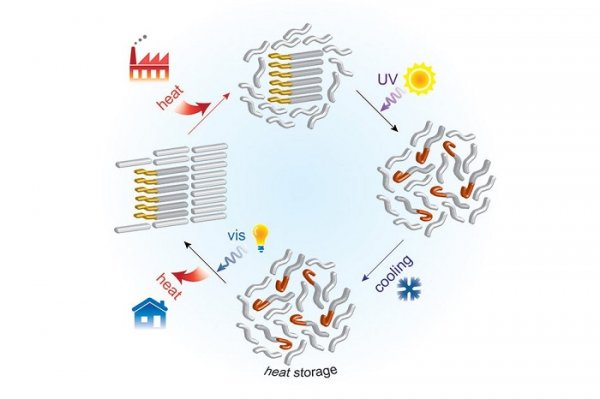MIT scientists are developing a new type of chemical composite that absorbs heat energy from the sun or other sources, stores it for a period of time, and then releases it in a controlled manner when exposed to light. This phase change material is a mixture of fatty acids and organic compounds and is expected to store and provide energy for people in developing countries someday. This technology can be applied to devices like solar cookers that absorb solar energy during the day and release it at night. MIT postdoctoral fellow GraceHan holds a new type of compound that can be used as a thermal battery. Scientists and engineers are interested in the potential applications of phase change materials. When they change from a solid state to a liquid state, they can absorb or release large amounts of heat energy (and vice versa). This technology can be used to regulate the building's heat, create "hot batteries", and keep the coffee warm even while driving to work. The principle of using a phase change material as a heat source is very simple. For example, when ice cubes change from solid to liquid water, they need to absorb a certain amount of heat. This is also why on an unusually warm day, the snow doesn't melt abruptly; and why ice cubes in the refrigerator are more likely to cool drinks than stainless steel squares. Like waxes, fatty acids, and molten salts, the difficulty with phase change materials is how to change their phase at a reasonable temperature, maintain a liquid state for a long time, and release heat as needed. The second material requires thick insulation, and the third requires a phase change material that releases energy when heated slightly or in contact with the catalyst. The study led by MIT postdoctoral scientists Grace Han and Huashan Li, and Professor Jeffrey Grossman, essentially introduced small molecules to act as photoelectric triggers for phase transitions (13 fatty acids and azobenzene dopants are used here). Mixture with tridecyl ester). This form of chemical energy can be maintained for a long period of time until it is activated by light triggering. This mixed material can be liquefied when it is heated, but when it is exposed to ultraviolet rays, it can still be liquid even when it cools down. This means that most of the heat is locked in this compound (about 200 joules per gram), which is good for organic phase change materials. With another beam of light, it can trigger the solidification of fatty acids and phase change materials and release energy. The researchers said that this feature makes it suitable as a "chemical thermal battery" that releases heat on demand, can store heat for more than 10 hours, and has room for improvement. At present, MIT's phase change material is still in the proof of concept phase, but it has been able to cope with temperature changes of 10°C (18°F). Not only can it play a role in solar cookers, but it can also be used to dry cereals, or to recycle waste heat from factories or vehicles for subsequent use. Details of this research have been published in the recently published Nature Communications journal. We provide some different purity of Alumina Ceramic Tube, like 95%, 99%, 99.5% and 99.7% that it related to the specia requirement and application. Alumina Ceramic Tube Alumina Ceramic Tube,Alumina Ceramic Thermocouple Tube,Dry Pressing Alumina Ceramic Tube,Industrial Ceramic Alumina Tube, Alumina Ceramic Bushing, Alumina Ceramic Sleeve, Alumina Ceramic Pipes Jinghui Industry Ltd. , https://www.ceramictek.com

We are capable of dealing with customized service via fine grinding, maching, polishing according to clients' drawing, specification and practical samples.